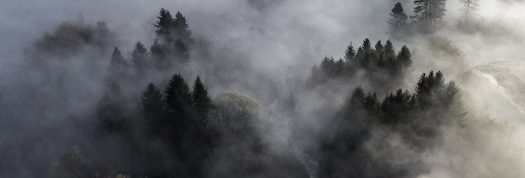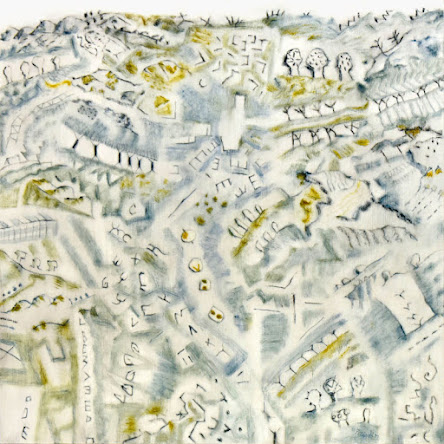The GEOframe Winter School 2023 (GWS2023) will be will be held in Trento University (Department of civil, environmental and mechanical engineering) on
December 05-07, 2022; January 09-13, 2023
This is the preliminary program:
- December 05-07, 2022: Software Installation – Online, via zoom (or in-site if desired).
- January 09-13, 2023: Geomorphological analysis of the basin, kriging-based spatialisation of meteorological variables, energy balance and evapotranspiration estimate, snow modeling, river runoff simulation, models calibration and verification – Onsite
Output of the school
The objective of the school is to enable the participant to set up and run the GEOframe system on their area of interest, with the spatially variable quantification of each component of the water balance (rainfall, snow, evapotranspiration, runoff, root-zone water content and groundwater levels)
Generalities
GEOframe is a system for doing hydrology by computer. By saying that it is a system, we emphasise that it is not a model but an infrastructure that contain many differentiated modelling solutions (some tens of that), which are built upon models’ components. Each modeling solution represent the optimal model’s combination to quantify the single component of the hydrological cycle in any study area (i.e. spatially varying rainfall, snow, evapotranspiration, runoff, root-zone water content and groundwater levels) at any time resolution (i.e. from sub-hourly to yearly).
GEOframe leverage on the Object Modelling system-framework (v3) that allows to connect modelling components to solve a specific hydrological issue together and having many alternative for its mathematical/numerical description. This infrastructure allows adapting the tools to the problems and not viceversa.
GEOframe has been applied to hydrological simulations from the point scale to large catchments as the Blue Nile, and among those is being deployed to the Po river basin (the largest in Italy), with great detail. GEOframe is open source and built with open-source tools.
Contents of the school
GEOframe contains tens of components that cover rainfall-runoff, evaporation, transpiration, infiltration, terrain analysis tools, interpolation models, calibrations tools.
The Winter school is about using some of these tools to perform the hydrological budget of catchments. The core rainfall-runoff model are dynamical systems (systems of ordinary differential equations) and the school mainly treats their theory and their use in a contemporary way as summarised in
these 7 steps.
Besides the lectures and the hands-on sessions, the Summer School is the occasion for discussion and experience exchange among senior scholars and young researchers.
Participants' background
Admissions are reserved to up to 30, PhD students and postdoctoral researchers, young scientists willing to understand hydrological processes and learning the modeling procedures based on the use of the GEOframe tools. Specifically, will study and model infiltration, energy budget, vegetation transpiration, water budget with process-based models
All students are asked to upload a CV and a motivation letter when applying.
Workload and credits
The Winter School, which is to be held in English, consists of 8 hours/day of activities for 8 days.
The first three days, December 05-07 2022, will be dedicated to the installation of the GEOframe-OMS system tools. Lectures will be brief, dedicated to informatics and the exploiting of the concepts of modeling by components, digital twin Earth. Most of the time will be used for supporting participants’ installations.
The other five days (January 09-13 2023) will cover:
- Catchment and Hydrologic Response Unit delineation
- Meteorological variables interpolation with Kriging techniques
- Short and longwave radiation estimate and simplified evapotranspiration methods
- Rainfall-Runoff modelling (as explained in these 7 steps) and calibration
Location and timing
University of Trento Polo Mesiano, H1 Room and Online.
The three days on informatics and installations (December 05-07 2022) will be also online.
The other days (January 09-13 2023) will be onsite. The time schedule will be 9-13 and 14-18 CET each of the days. Lectures and workout will be recorded and immediately post on the VIMEO Channel of the School. Therefore, they could be followed off line. Special agreement will be arranged for supporting abroad students with fuse issues.
Participation costs
Subscription to the class is necessary for anyone who want to attend the course. For Researcher, PhD students, and scientists who want the certificate of attendance, the Course costs 180 Euros. The certificate is issued after the presentation of a small project of simulations for which appropriate tutoring will be given during and after the School.
The cost of the school is free for Students of the Hydrological Modelling Classes at the University of Trento; for Ph.D. students of the University of Trento DICAM and C3A programs; for the participants of the PRIN Waterstem project; for the participant of the project “Studio delle caratteristiche idrologiche del Distretto del fiume Po mediante l’applicazione della modellistica GEOframe”; for all who wants to participate without having a certificate of GEOframe proficiency.
Scientific Committee
Prof. Giuseppe Formetta, Ph.D; Ph.D., Eng. Marialaura Bancheri; Ph.D., Eng. Niccolo' Tubini; Prof. Riccardo Rigon, Ph.D.
Organising Committee
Prof. Giuseppe Formetta, Ph.D; Eng. Concetta D’Amato, Eng. Shima Azimi, Ms. Sc. Martin Morlot, Ing. Daniele Andreis, Ing. Gaia Roati, Ing. Riccardo Busti (the fantastic group of our Ph.D. students), Prof. Riccardo Rigon, Ph.D.
Organising Institutions
- Department of Civil, Environmental and Mechanical Engineering, University of Trento
- Center Agriculture Food Environment, University of Trento
- Institute for Agricultural and Forest Systems in the Mediterranean, National Research Council, Ercolano NA, Italy
Contacts
For further information write to: abouthydrology@google.com, giuseppe.formetta@unitn.it or to the Secretary of the Class dott. Lorena Galante, lorena.galante@unitn.it
Other information
The GSS2023 talks and labs will be recorded and made publicly available during the School for self-training through the
GEOframe blog. Information about past Schools can be found
here.














